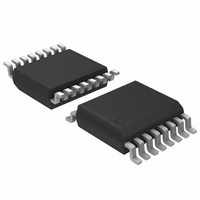ADT7473ARQZ-1RL ON Semiconductor, ADT7473ARQZ-1RL Datasheet - Page 29

ADT7473ARQZ-1RL
Manufacturer Part Number
ADT7473ARQZ-1RL
Description
IC REMOTE THERMAL CTLR 16QSOP
Manufacturer
ON Semiconductor
Series
dBCool®r
Datasheet
1.ADT7473ARQZ-1RL.pdf
(74 pages)
Specifications of ADT7473ARQZ-1RL
Function
Fan Control, Temp Monitor
Topology
ADC, Comparator, Fan Speed Counter, Multiplexer, Register Bank
Sensor Type
External & Internal
Sensing Temperature
-40°C ~ 125°C, External Sensor
Output Type
SMBus™
Output Alarm
No
Output Fan
Yes
Voltage - Supply
3 V ~ 3.6 V
Operating Temperature
-40°C ~ 125°C
Mounting Type
Surface Mount
Package / Case
16-QSOP
Full Temp Accuracy
+/- 0.5 C
Digital Output - Bus Interface
Serial (3-Wire, 4-Wire)
Maximum Operating Temperature
+ 125 C
Minimum Operating Temperature
- 40 C
Lead Free Status / RoHS Status
Lead free / RoHS Compliant
Available stocks
Company
Part Number
Manufacturer
Quantity
Price
Company:
Part Number:
ADT7473ARQZ-1RL
Manufacturer:
ON Semiconductor
Quantity:
1 750
Part Number:
ADT7473ARQZ-1RL
Manufacturer:
ON/安森美
Quantity:
20 000
High Frequency Mode PWM Drive
frequency mode for fans 1, 2 and 3.
PWM Frequency Registers
(Register 0x5F to Register 0x61)
Bits [2:0] FREQ
Fan Speed Control
automatic and manual modes.
automatically varied with temperature and without CPU
intervention, once initial parameters are set up. The
advantage of this is that, if the system hangs, the user is
guaranteed the system is protected from overheating. The
automatic fan speed control incorporates a feature called
dynamic T
effort required to program the automatic fan speed control
loop. For more information and procedures on how to
program the automatic fan speed control loop and dynamic
T
Speed Control Loop section.
ADT7473−1 allows the duty cycle of any PWM output to be
manually adjusted. This can be useful if the user wants to
change fan speed in software or adjust the PWM duty cycle
output for test purposes. Bits [7:5] of Register 0x5C to
Register 0x5E (PWM configuration registers) control the
behavior of each PWM output.
PWM Configuration Registers
(Register 0x5C to Register 0x5E)
Bits [7:5] BHVR
manually updated by writing to Register 0x30 to Register
0x32 (PWM current duty cycle registers).
Programming the PWM Current Duty Cycle Registers
that allow the PWM duty cycle for each output to be set
anywhere from 0% to 100% in steps of 0.39%.
given by:
MIN
Setting Bit 3 of Register 0x5F, 60H or 61H enables high
The ADT7473/ADT7473−1 controls fan speed using
In automatic fan speed control mode, fan speed is
In manual fan speed control mode, the ADT7473/
Once under manual control, each PWM output can be
The PWM current duty cycle registers are 8−bit registers
The value to be programmed into the PWM
000 = 11.0 Hz
001 = 14.7 Hz
010 = 22.1 Hz
011 = 29.4 Hz
100 = 35.3 Hz (default)
101 = 44.1 Hz
110 = 58.8 Hz
111 = 88.2 Hz
111 = manual mode
Value (decimal) = PWM
calibration, see the Programming the Automatic Fan
MIN
calibration. This feature reduces the design
MIN
/0.39
MIN
register is
http://onsemi.com
29
Example 1
For a PWM duty cycle of 50%
Example 2
For a PWM duty cycle of 33%
PWM Current Duty Cycle Registers
Register 0x30, PWM1 Duty Cycle = 0x00 (0% default)
Register 0x31, PWM2 Duty Cycle = 0x00 (0% default)
Register 0x32, PWM3 Duty Cycle = 0x00 (0% default)
user can keep track of the current duty cycle on each PWM
output, even when the fans are running in automatic fan
speed control mode or acoustic enhancement mode. See the
Programming the Automatic Fan Speed Control Loop
section for details.
Fan Presence Detect
directly connected to a PWM output. This feature does not
work for 3−wire fans. To detect whether a 4−wire fan is
connected directly to a PWM output, the following steps
must be performed in this order:
PWM outputs to 100% and then back to their normal speed
is not noticeable in most cases.
Description of How Fan Presence Detect Works
±10%, which typically sources 5 mA. While the detection
cycle is on, an internal current sink is turned on, sinking
current from the fan’s internal pullup. By driving some of the
current from the fan’s internal pullup (~100 mA), the logic
buffer switches to a defined logic state. If this state is high,
a fan is present; if it is low, no fan is present.
ensures the PWM output is not pulled to a voltage higher
than the maximum allowable voltage on that pin (3.6 V).
By reading the PWMx current duty cycle registers, the
This feature can be used to determine if a 4−wire fan is
As the detection time only takes 5 ms, programming the
Typical 4−wire fans have an internal pull up to 4.75 V
The PWM input voltage should be clamped to 3.3 V. This
Value (decimal) = 50/0.39 = 128 (decimal)
Value = 128 (decimal) or 0x80 (hex)
Value (decimal) = 33/0.39 = 85 (decimal)
Value = 85 (decimal) or 0x54 (hex)
1. Drive the appropriate PWM outputs to 100% duty
2. Set Bit 0 of Configuration Register 2 (0x73).
3. Wait 5 ms.
4. Program the fans to run at a different speed if
5. Read the state of Bits [3:1] of Configuration
cycle.
necessary.
Register 2 (0x73). The state of these bits reflects
whether a 4−wire fan is directly connected to the
PWM output.











